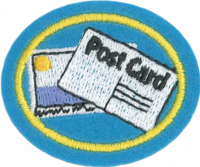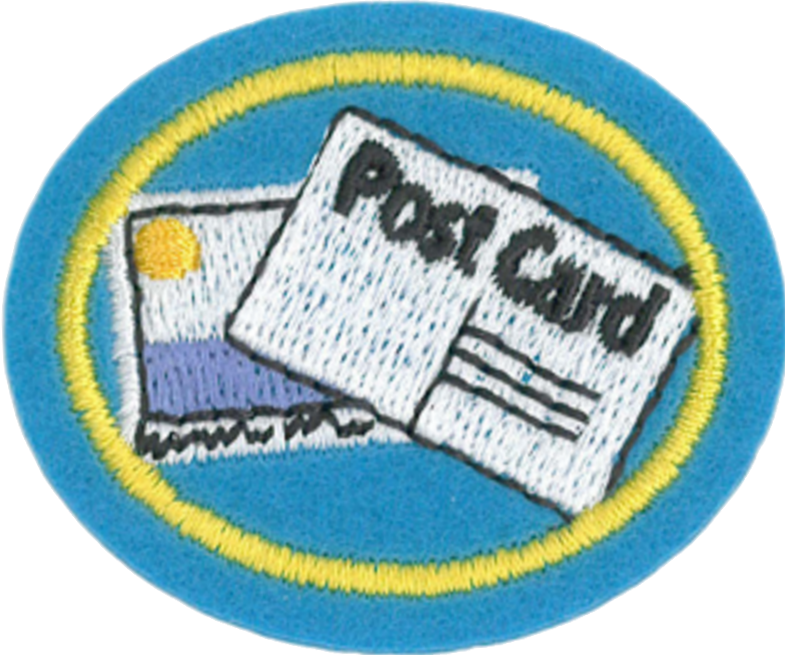AJ Abzeichen/Postkarten/Antworten
1
The first postal type card in the United States was a privately printed card copyrighted in 1861 by J.P. Carlton. This copyright was later transferred to H.L. Lipman. The "Lipman Postal Cards"
2
These private mailing cards were to be posted with one cent stamps (the same rate as government postals). This was perhaps the most significant event to enhance the use of private postals.
3
For this answer check your country's postal service website or ask at the post office.
4
In the United States, postcard collecting is called Deltiology.
5
5a
1840-1869 The envelopes were often printed with pictures of comics, Valentines and music. Thousands of patriotic pictures appeared on U.S. envelopes during the Civil War period of 1861-1865, these are now known as Patriotic Covers.
5b
1870-1898 The first postal card was suggested by Dr. Emanuel Herrmann, in 1869 and was accepted by the Hungarian government in the same year. Thus the first cards printed with the intention for use as souvenirs were the cards placed on sale in 1893 at the Columbian Exposition in Chicago.
5c
1898-1901 Starting in 1898, American publishers were allowed to print and sell cards bearing the inscription, "Private Mailing Card, Authorized by Act of Congress on May 19, 1898"
5d
1901-1907 In 1901, the U.S. Government granted the use of the words "Post Card" to be printed on the undivided back. Writing was still limited to the front.
5e
1907-1915 By this period, divided backs were almost universal, except in a few monopolistic governments. Previous to and during this period, a majority of U.S. postcards were printed in Europe, especially in Germany whose printing methods were regarded as the best in the world.
5f
1916-1930 During this period, American technology advanced allowing us to produce quality cards. The cards of this era were usually printed with white borders around the picture.
5g
1930-1945 Among the best cards of this era are the political humor cards of World War II. Technology during this time enabled publishers to print cards on a linen-type paper stock with very bright and vivid colors.
5h
1939-present "Chrome" postcards started to take over the marketplace immediately after they were launched by the Union Oil Company. Sold in their western service stations, they were easily produced, were of high photo quality and of most importance, they were in true living color. By 1945 they replaced both linen and black & white postcards in roadside postcard racks.
6
6a
View cards offer historic reference to buildings, streets, and even towns which may no longer exist or that have changed significantly over time.
6b
The greeting card is almost as basic as the view card in the earlier eras, though as time has shown, its popularity declined in later eras. Christmas, Easter, birthdays and most other holidays and special occasions were well represented and are fairly common. However, some greetings such as the "Labor Day" cards, are considered scarce.
6c
Historical cards are printed to commemorate events such as war, social problems, expositions, parades, coronations, or politics. These cards offer much to the serious collector in the way of increased value. This is a wide open field with much to offer anyone interested in twentieth century history.
6d
This rarity, combined with the skill of the artist of this period, make these cards very popular among collectors today. To better understand this popularity, think of these cards as 3 1/2" x 5 1/2" original high quality prints, which they are, instead of as postcards. Nowhere in the world of art does such quality material exist at such low prices. This booming market drew the very best artists of the period, creating a wealth of quality material unmatched in the art world.
6e
These real photo art studies of beautiful women, children, lovers, etc, are often hand-tinted in great detail and in colors which almost defy description.
7
See the list in Requirement 5.
8
- a. Store in a dry spot away from heat and moisture to prevent fading, staining or mildew.
- b. Avoid cigarette smoke which leaves an unpleasant odor and turns your postcards brown.
- c. Keep out of the sun and direct light.
- d. Use PVC-free & acid-free storage systems.
9
9a
9b
9c
- An efficient way to collect postcards is to ask friends who are traveling to send postcards to you or bring postcards back for you.
- You might also join a postcard collecting forum and trade with other people.
- Perhaps you can write some other Pathfinder clubs around the country and world (check for Facebook and webpages), exchanging postcards so you can all earn the honor.
- Be on the lookout for free or low cost postcards at tourist spots, businesses etc.
- Ask your local tourist office if they have any free local postcards you can send to others in trade
While you are building your collection, look at the requirements for Postcards - Advanced carefully. There you must pick a theme for some of the cards in a large collection, which you might as well do from the beginning and save some time.
10
If you are mounting the postcards on a board, instead of say, a binder, think about using document corners to avoid putting holes or tape on the postcards. You can fold your own document corners for free or buy them from a stationary store. A binder filled with clear plastic photo sleeves allows for damage free handling, but if your collection is not high value, a nice shoebox with recipe dividers to separate sections of your collection should be fine.
11
2 Cor 13:13, Phil-4:21 or 2 John 13
They used letters written out and read out at the destination. Sometimes an important decree from the King was read aloud in the town square. Pastoral letters would have been read out in the church. In Biblical letters the author identifies himself (signs the letter) first and greets people near the end. Today we usually greet first and sign at the end.
References
This blogger has visited nearly every country on earth and sent himself postcards [1] www.postcardsandtravel.blogspot.com.es A very impressive collection that will teach you much about the hobby.


